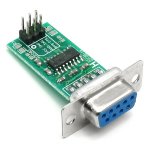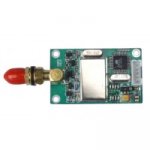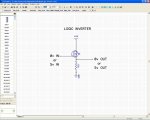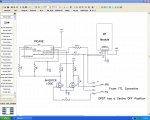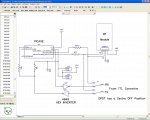Hi Everyone
I was wondering if you could help me with a query regarding connection to the picaxe.
I am currently working on a wireless garage alarm which will alert me of an intruder back at the house. This involves a 433mhz transceiver module which can have parameters programmed into it through a RS232 to TTL converter module and also an 18X picaxe
The tranceiver module was purchased with TTL interface to work well with picaxe. This works great, so wanting to have access to to the tranceiver at any time I have installed the TTL converter module in the enclosure that houses the project, which then plugs into the serial port on the computer.
My question is, can I have access to the picaxe later on, ie - download through the RS232 to TTL converter instead of having to add another port for the traditional download cable/circuit? The cnverter module has TX & RX outputs on it, can i hook these up to the serial in/serial out connections that are usually used in the download circuit.
Many thanks...I hope i have explained myself enough
Kurt...
I was wondering if you could help me with a query regarding connection to the picaxe.
I am currently working on a wireless garage alarm which will alert me of an intruder back at the house. This involves a 433mhz transceiver module which can have parameters programmed into it through a RS232 to TTL converter module and also an 18X picaxe
The tranceiver module was purchased with TTL interface to work well with picaxe. This works great, so wanting to have access to to the tranceiver at any time I have installed the TTL converter module in the enclosure that houses the project, which then plugs into the serial port on the computer.
My question is, can I have access to the picaxe later on, ie - download through the RS232 to TTL converter instead of having to add another port for the traditional download cable/circuit? The cnverter module has TX & RX outputs on it, can i hook these up to the serial in/serial out connections that are usually used in the download circuit.
Many thanks...I hope i have explained myself enough
Kurt...

